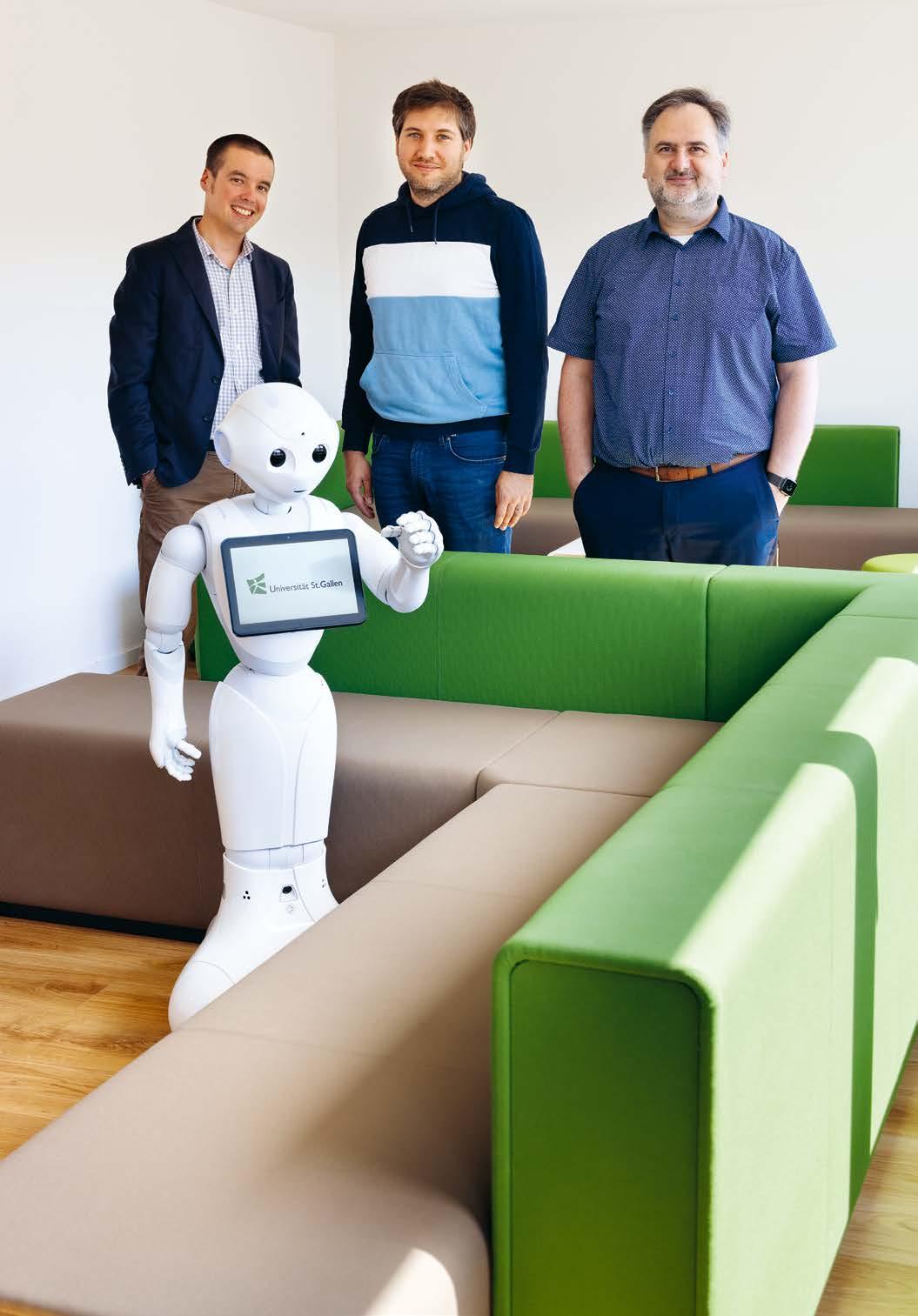
4 minute read
Topstory, School of Computer Science: Language recognition
Topstory School of Computer Science
Language recognition
Machine language processing is currently subject to a rapid development, which is made possible by artificial intelligence. But how do you teach a machine dialects which are not written? This is the focus of the research conducted by Professor Siegfried Handschuh and his team.
Natural language processing, or NLP for short, deals with techniques and methods for the machine processing of natural language. This is the specialist field of Professor Siegfried Handschuh, Full Professor of Data Science and Natural Language Processing at the School of Computer Science. Currently, he is teaching an artificial intelligence Swiss German. This has its especial snags, because Swiss German is not written. “Standard languages such as German or English, in particular, are covered very well. Think of Alexa, Cortina or Siri: there are plenty of resources for English, although the language also has regional variants.” There is no standard for Swiss German, however, which is why the task attracts him: “For a scientist, this is a highly interesting problem.”
Public service
Training an artificial intelligence requires data. Loads of them. “Generally, you assume that you need at least 3,000 hours of spoken language, ideally with several variants of each word you want to cover. This is difficult to obtain.” Before Siegfried Handschuh was appointed to his professorship in St.Gallen, he worked in Bavaria, at the University of Passau, where in a similar project, data were collected with painstaking patience: “We had a list of words and went from village to village and asked people to pronounce them. In this way, we established a huge database.” This, however, is very labour-intensive and, considering the required volume of data, takes a long time. How is he doing it in the current research project? “We’ve been working with data from Swiss television. The advantage of this is that SRF offers High German subtitles for deaf people. This provides simple training data like weather forecasts, and more complicated ones such as discussion programmes like Club, where people constantly interrupt each other and it’s difficult to distinguish between speakers.” The team also asked various firms for data, but unfortunately to no avail. “That was probably scuppered by commercial interests.”
The technology behind it
Siegfried Handschuh and his team are working with deep learning approaches in accordance with the transfer learning process. Thus they use the model of a completely trained language such as English and relearn it in Swiss German. “This works amazingly well. Funnily enough, the English model works better for Swiss German than the German one although you wouldn’t expect this intuitively.” Siegfried Handschuh surmises this to be the case because there are a great deal more resources in English. At the early stage of NLP, it was assumed that language can be charted by means of formal logic, but this fell short. “Language is much more than that.” Astonishingly, statistical approaches which calculate probabilities have proved to be much better. Important success factors for NLP projects are the data volume, the algorithm and the computing power. “In this respect, we’re in a good position at HSG with the Nvidia DGX-2 supercomputer. It would be great, though, to have even more training data.” The well-known risk of unconscious bias that can occur in deep learning is not regarded as a problem for his project by Siegfried Handschuh. “This is primarily problematical if an artificial intelligence is taught world knowledge. There it can happen that all sorts of prejudices get into the model and are not detected for a long time. But cultural aspects can get into NLP, for instance when we translate gender-neutral

The language-controlled robot Pepper in action.
languages into gender-specific ones. For example, certain properties are statistically ascribed to women rather than men.”
Diverse application
The great economic potential of NLP is undisputed. With regard to Swiss German, Siegfried Handschuh can see it in connection with chatbots, in particular, which are widespread in the US and in Germany, for example, but are still used relatively little in Switzerland. There are many applications, for instance in commerce, banking and insurance. Besides their commercial applications, these systems can also be used in the social sphere, for example in e-learning for students or in geriatric care. The possibilities are almost unlimited; language ascribed to the judges’ political affiliation. There are indications that this is the case.” Siegfried Handschuh reckons that the disruptive potential of NLP is similarly high to that of autonomous driving. “What is currently happening in NLP is enormous. Yet we can extrapolate this development only up to a point. It will still be a big step from automatic language recognition to a comprehensive human understanding of language, but work is being done on this at a rate of knots.”
recognition will be omnipresent in the future. Professor Handschuh considers e-learning to be a particularly exciting field: “I can see an enormous potential here, in particular, because you can’t ask a bot any wrong questions, it never gets tired, nervous or disgruntled. The customary student/teacher hierarchy is abolished in a dialogue with a chatbot and enables students to learn in a more relaxed manner. There are also big opportunities in the field of the legal sciences, which are not only about spoken language but about texts as such. Legal tech is in high demand in the Anglo-Saxon system in particular, since precedents play an important part there. “Currently, I’m supervising a Master’s thesis in which we examine whether there is any bias in court rulings that can be
The Babel fish remains science fiction – for the time being
When will there be technical aids which, similarly to the “Babel fish” thought up by Douglas Adam in his cult book The Hitchhiker's Guide to the Galaxy, can be
Campus







